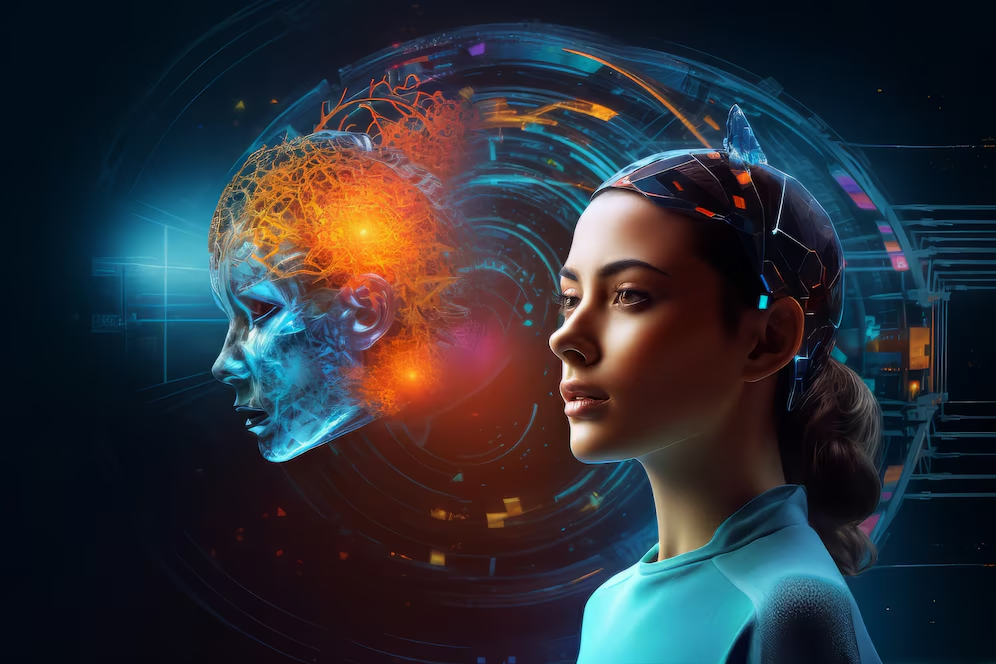
In artificial intelligence, which pushes the boundaries of creative thinking and human-like design, no project appears like Symley. This AI-based technology produces almost human-like faces with awe-inspiring quality and style. In this article, we’ll take you on an in-depth look into the world of Sy-mley, the fantastic paintings that AI-generated facial expressions resemble, and the potential implications and ethical grey areas these advanced technologies bring.
What is Symley and How Does it Work?
Symley, at its core, is an AI system that uses the latest technology to create distinctive, high-resolution, realistic photographs of human faces that are not real. Sy-mley combines a robust neural network and a powerful generator adversarial network, also known as GAN, that participates in a creative battle to create authentic and unique images.
The Symley Generator
The core core of Symley is a unique generator network, which is one part of the GAN duo. It utilizes random noise as its input and creates an image that resembles a face as an output. Through extensive learning with a vast database made up of faces from humans, the algorithm has developed a way to build features and textures that aren’t just convincing but also visually pleasing.
The Science Behind Symley: Understanding Generative Adversarial Networks (GANs)
The Generative Adversarial Network (GAN) is an AI that has been at the forefront of generating engaging material in recent years. Made up of two networks, the GenerGeneratorthe Discriminator, GANs battle each other in training. The Generator, similar to similaGeneratorey, creates candidates, while the Discriminator’s job is to differentiate the Generator’s input from the regenerator’s (accurate face-to-face data in this instance). The Generator gets better through time and many iterative clashes until the Discriminator cannot discern the difference between what is real and what’s not.
Exploring the Diverse and Realistic Symley Faces
Symley technology is for more than just show. Sym-ley technology also produces more than dull replicas. Each one it makes is distinctive due to its unique combination of features that vary from the common to the esoteric.
Symley Face Examples
With the diverse characteristics and traits gathered from diverse races, ages, and genders, Symley’s faces display a woven human-like tapestry that extends beyond.
Symley Face Diversity
The variety of the faces Smley creates is extraordinary. They show a diverse array of hues of hair, skin tones, and facial shapes, each contributing to the vast and rich cultural mix they produce.
Symley Face Realism
Even though these images are based on virtual reality these photos, they exhibit incredible realisticity. They show nuanced features like hair follicles, skin texture, and expressive expressions, which make them almost indistinguishable from photos of real people.
Practical Applications of Symley Faces: From Art to Business
AI-generated faces go beyond mere display of artistic talent and can penetrate different sectors that need visual material.
Uses for Symley Faces
Symley faces are used in many areas. They include, but aren’t restricted to:
- Artificial Avatars for Games and Virtual Worlds: Sy-mley entities can be used as characters not played by players or even as avatars of players in their virtual worlds.
- Stock Image Generation: Flexible faces can be used to build an enormous collection of stock images appropriate for various projects.
- The Platform for Content Personalization may utilize AI faces to customize content and make images align with viewers’ demographics in a non-invasive way.
Symley in Business and Marketing
Amid a crowded marketing and business landscape, Sy-mley provides a valuable advantage. Companies can use the technology to produce an array of marketing tools and adjust the look of their messages to match their target audience or the tone of their campaigns.
The Ethical Considerations of AI-Generated Faces
The advent of this technology is not merely the sound of awe but also a warning to take proper review. Utilizing AI to create facial expressions and deepfakes has raised grave ethical issues, particularly in situations where these images are made without consent. The potential for abuse, deceit, and privacy breaches is widespread.
Ethics of Symley
The ethical consequences of Smley are many-sided. The main issue is that these artificially generated artificially generated faces can be used to impersonate actual people and could destroy reputation, fraud, or any other nefarious actions.
Symley Privacy Concerns
Another concern is the privacy of those whose facial information could be used to create training data without their consent. This is the foundation of many privacy and data use concerns.
Symley Regulation
In recognition of the complex nature of these issues, discussions on the regulation of artificially generated material are taking place in various areas. Transparency of usage and consumers’ awareness of the artificiality behind such material is a significant goal.
Conclusion: The Future of Symley and AI-Generated Faces
Symley is at the crossroads of technology, art, and ethical dilemmas. The future of technology is promising, with unlimited creativity, improved efficiency, and new solutions across various sectors. It also requires us to build solid regulatory frameworks and ethical rules that can keep up with the rapid pace of technological advancement. The balance between advancement and security is the primary tension that creators and those who consume AI-generated material should be able to walk.
Read also: Unlocking the Power of HDIntranet: A Guide





